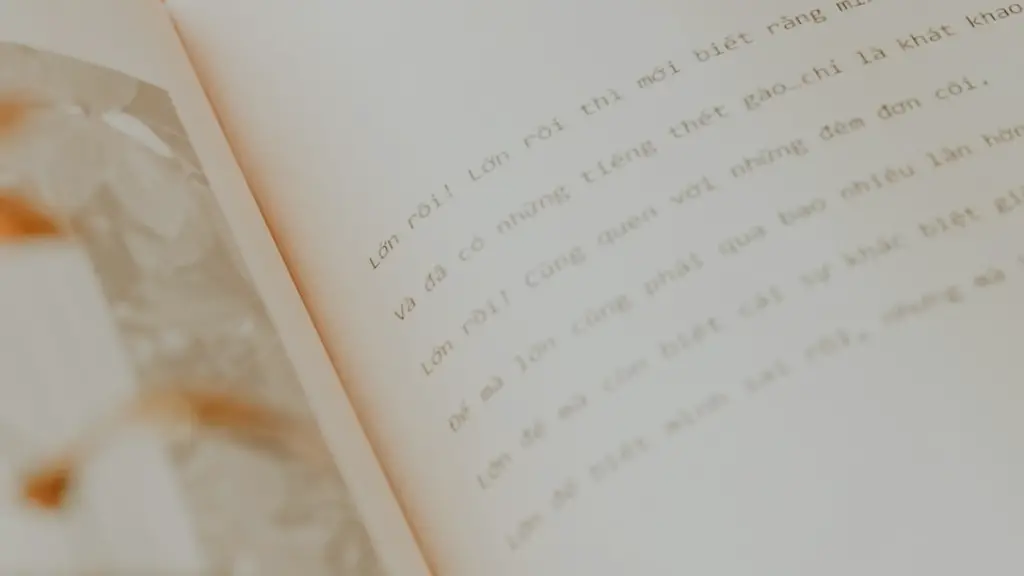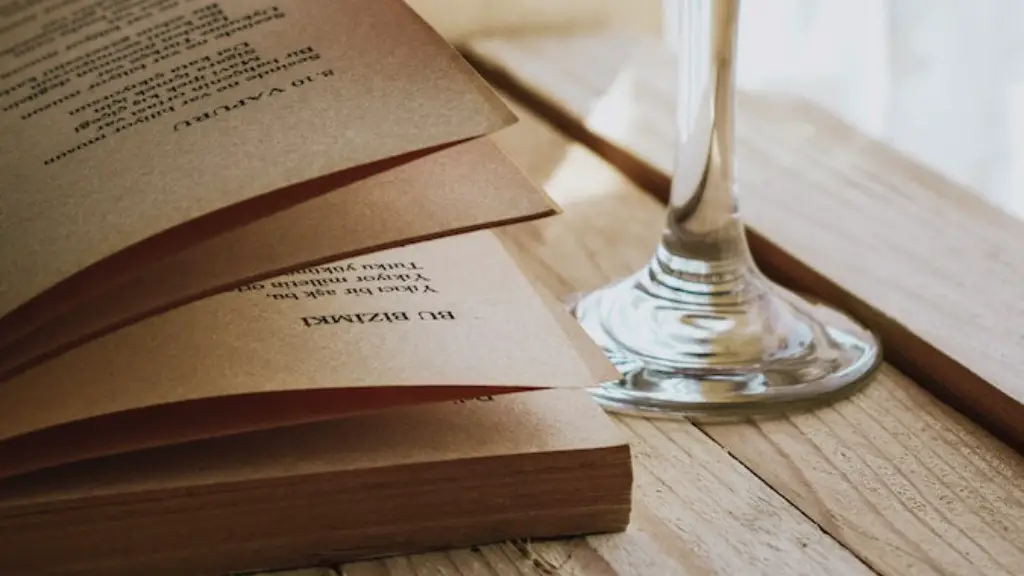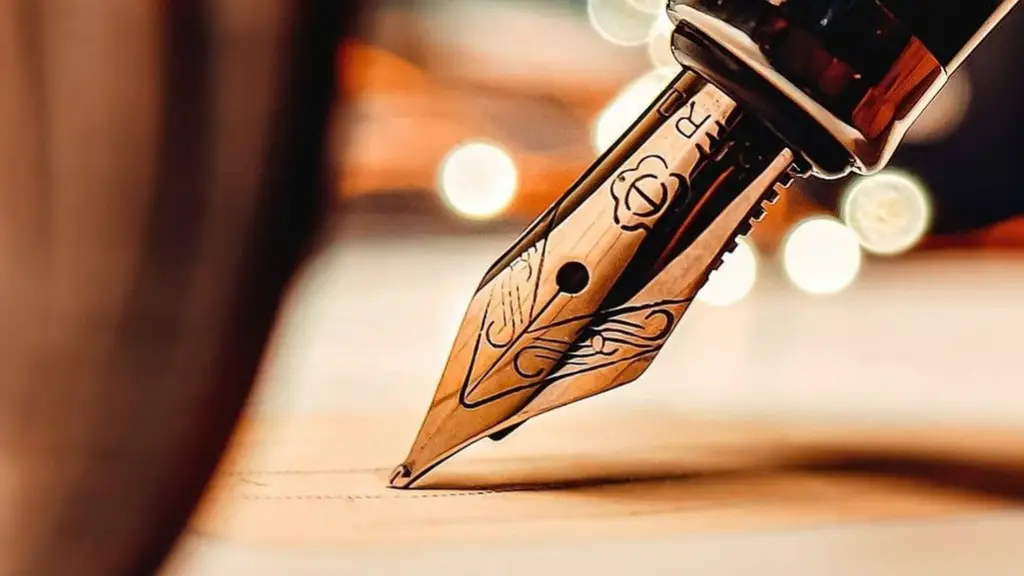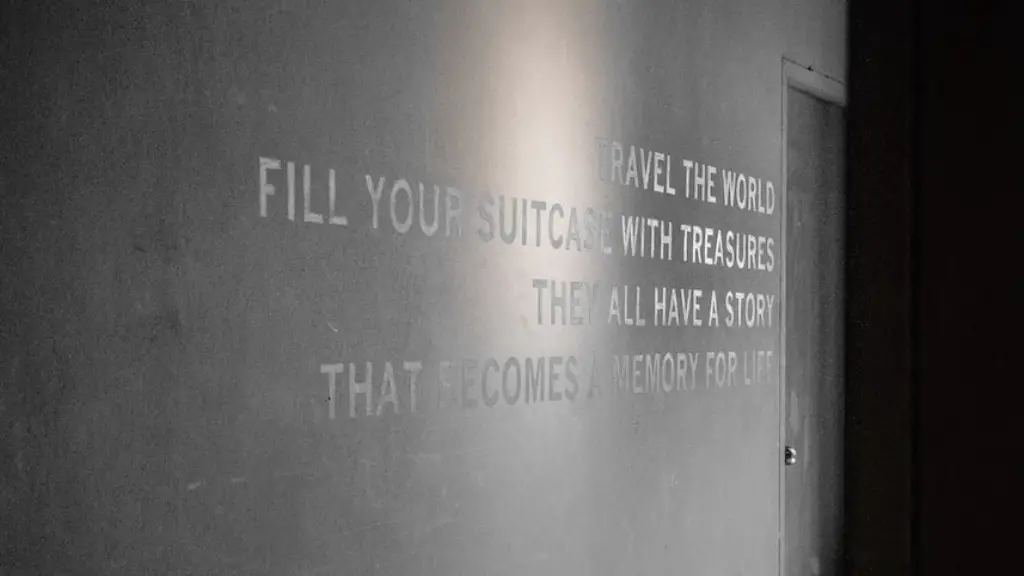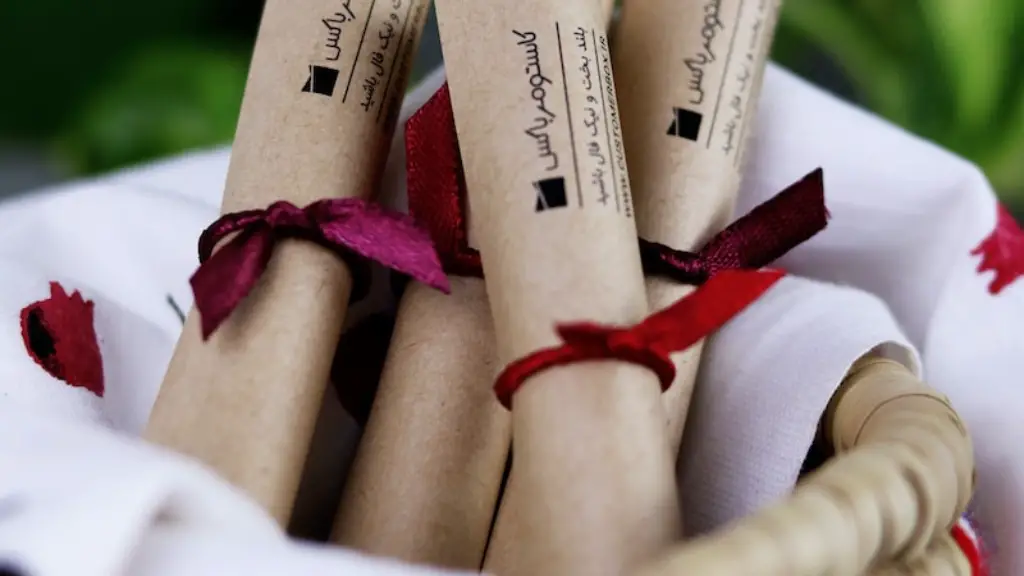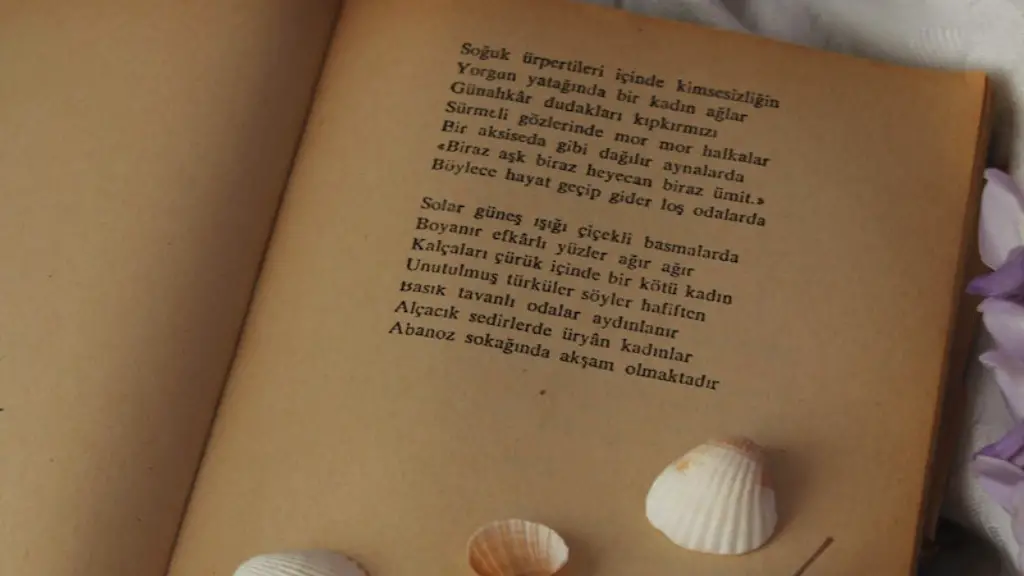Narrative Poetry
Narrative poetry is a type of poetry that is defined by its ability to tell a story. It is usually written in the form of verse and usually encapsulates an entire plot with a beginning, middle and end. Character development and plot are often employed in the telling of the story. Over the years, narrative poetry has been used to tell myths, legends, and other tales. It has also been employed to express emotions, recount historical events, and tell personal experiences.
Some of the most famous works of narrative poetry are epics, such as the Odyssey and the Iliad. These epics are long narratives that feature a hero on a quest, often travelling to far off places or taking on physical or spiritual challenges. Other well-known narrative poems include Robert Frost’s “The Road Not Taken” which tells the story of a man choosing one of two paths, and Alfred Lord Tennyson’s poem “The Lady of Shalott”, which tells the tragic tale of a woman imprisoned in her tower.
Narrative poetry can contain many literary techniques, such as imagery, metaphor, similes, and satire. It can also feature a variety of poetic forms and styles such as ballads, blank verse and the sonnet. Narrative poetry has proven to be a flexible and powerful form of expression over the centuries and it continues to capture the imagination of readers and listeners.
Experts agree that narrative poetry is an effective way to communicate emotions, ideas and stories. Narrative poetry can convey complex ideas in a simple and direct manner. It can evoke powerful emotions in the reader and draw them into the world of the poem. It can be used to explore various topics and perspectives. It can also be used to teach moral lessons or illustrate a certain point of view.
My own insight is that narrative poetry gives readers the opportunity to be creative and to craft stories in their own voice. It allows the writer to be more expressive and to explore different themes in different ways. The narrative structure and poetic devices can help to shape the tone and style of a poem and to add a sense of rhythm and musicality to the writing. In this way, narrative poetry can create an engaging experience for the reader.
Lyric Poetry
Lyric poetry is a type of poetry that expresses emotions in a very direct way. It is often personal and intimate in nature, expressing the poet’s thoughts, feelings, and experiences. Unlike narrative poetry, lyric poetry does not tell a story but instead focuses on the poet’s individual emotions and experience. Many lyrics are meant to be sung or set to music, providing a musical element to the poetry.
Lyric poetry is not bound to any particular form or structure and can take many different forms. It can be written in many different metre, rhyme schemes, and structures, or lack any structure at all. The form of the poem is usually determined by the emotion the poet wishes to convey. It is up to the poet to choose the form that best expresses their feelings.
Despite the freedom to explore different forms, lyric poetry remains constrained to the emotions of the poet. This is an advantage and disadvantage at the same time. On the one hand, it allows the poet to be extremely honest and expressive with their feelings. On the other hand, it can limit the scope of the poem and can make it difficult to explore topics outside of one’s own experience.
My insight is that lyric poetry allows us to explore the complexities of our emotions in a very deep and personal way. It allows us to express ourselves in a unique way by crafting our own emotions into words. It can create a sense of understanding and empathy as the reader is able to relate to the poet’s experience. Lyric poetry can also be used to explore topics such as faith, love, and even politics in a very powerful and moving way.
Haiku Poems
Haiku poems are short, three-line poems originating from Japan. They are traditionally composed of seventeen syllables divided into three lines of five, seven, and five syllables. The form of the poem is extremely structured and often revolves around a central theme or image. Haiku’s are often written about nature and encapsulate the beauty of the natural world in a very concise form.
Haiku’s depend on the combination of words to create a vivid image or to express a strong emotion. It is up to the poet to choose the right words and/or structure a phrase in a very concise way. Haiku’s can also be used to convey humour and can express complicated feelings in a very short form. They often contain a surprise element that catches the reader by surprise.
Some of the best haiku’s make use of sensory details and metaphors to evoke a vivid image in the reader’s mind. They often use simple language to create a powerful effect and can be an effective way to express emotions in an efficient and meaningful way. Haiku’s can also be used to explore complex topics in a new and interesting way.
My own insight is that haiku is a great way to explore all aspects of writing, from syntax, form and style to rhyme and alliteration. It is perfect for poets who want to express their ideas in a concise and meaningful way. The structure of the haiku can help to create a sense of rhythm and musicality and can be used to evoke strong emotions in the reader. It is also a great way to appreciate the beauty of language and the written word.
Limerick Poems
Limerick poems are five-line poems, usually written in anapestic metre. The first and second lines usually rhyme with each other, as do the third and fourth, while the fifth usually rhymes with the first two. Limericks are often humorous and can contain puns and double entendres. They often feature a surprise element in the last line, or a play on words.
The structures of limerick poems allow for lots of flexibility, allowing poets to explore different topics in a humorous and entertaining way. There are no rules about what topics can and cannot be explored. Limericks can be used to tell stories or to make observations about life. They can also use sarcasm, irony, and metaphor to convey messages in a fun and clever way.
Limericks can also be used to make social or political commentary. They can be a great tool to raise awareness of issues or to express opinions in a light-hearted way. Some of the best limericks are those that make the reader laugh while also making a point. They can help readers to look at things from different perspectives, and can spark interesting conversations.
My own insight is that limerick poems are a great way to exercise our creativity and to engage with humour. They can be both entertaining and thought-provoking, and can be used to explore topics in a unique way. Limericks can be a great way to have fun with words and can provide a platform to express our thoughts and feelings in an entertaining and witty way.
Sonnet Poems
A sonnet is a poem written in the form of a fourteen-line lyric. It typically consists of a single stanza of fourteen lines, divided into four quatrains, or four-line verses. The rhyme scheme of a sonnet is often prescribed, typically following the pattern of abab cdcd efef gg. The metre of the poem is usually iambic pentameter, which is a metre of five feet of two syllables, one unstressed and one stressed.
Sonnets are often used to explore themes like love, life and death. They can be used to explore the complexities of human emotions and experience in a very concise and structured way. Sonnets often employ the use of metaphors and imagery to convey a powerful emotion or message. They can also be used to make social or political commentary in a lyrical and poetic form.
One of the most popular forms of the sonnet is the ‘Shakespearean’ sonnet. This form of the sonnet follows the rhyme scheme of abab cdcd efef gg. It is often written in iambic pentameter and can be used to explore themes of love and mortality. It can also employ puns, contradicting statements and strong imagery to convey the poet’s thoughts and feelings.
My own insight is that sonnets are an effective way to explore the complexities of human nature. They can be used to explore the depths of emotion and experience, while also being able to express complex thoughts and opinions in an organised and cohesive way. It is a very powerful form of poetic expression that allows the poet to explore different topics in a concise and meaningful way.
Tankas Poems
Tanka is a type of thirty-one-syllable Japanese poem that is technically comprised of two shorter forms, the haiku and the waka. These two forms together consist of a five-line poem of thirty-one syllables. The syllable pattern is five syllables in the first and third lines, seven syllables in the second and fourth lines, and five syllables in the fifth line.
Tanka poems can be used to explore many subjects, from nature and love to life and death. They are often elegiac in nature, expressing the poet’s sorrow and grief. Tanka can also be used to convey a sense of joy and beauty, or even to make light of a situation. They can also contain complex images, metaphors, and symbolism to help express the poet’s thoughts and feelings.
Tanka also has a strong emphasis on nature and the beauty of the natural world. Tanka poems often employ the use of natural elements such as animals, plants, and landscapes. They can be used to explore how we are connected to the environment and the importance of preserving the natural world. Tanka can also be used to tell stories, provide social and political commentary, or even to make observations about life.
My own insight is that Tanka is a great way to explore the literary and poetic traditions of Japan. It is also a great way to appreciate the beauty of nature and to explore our own thoughts, emotions, and experiences. Tanka poems help to bring out our innermost feelings and can be a very powerful form of poetic expression.
